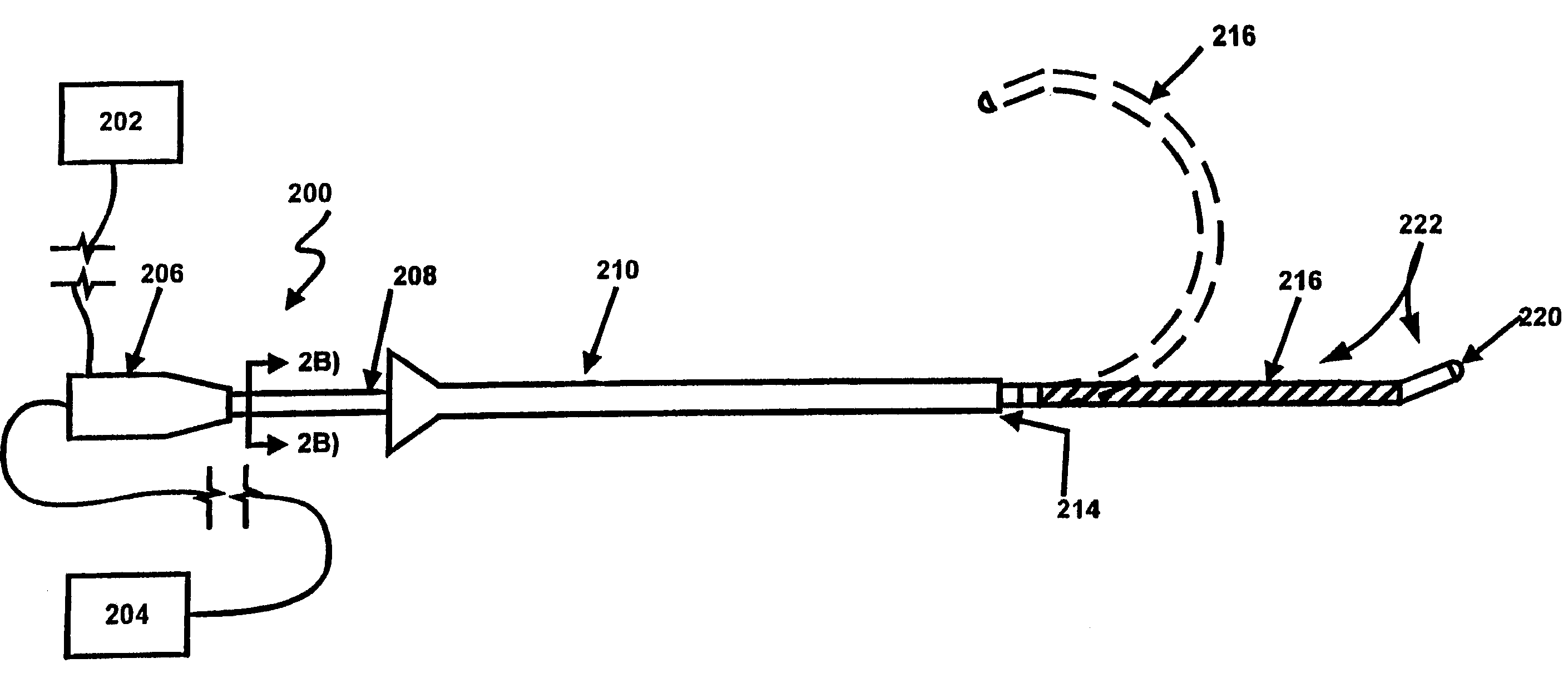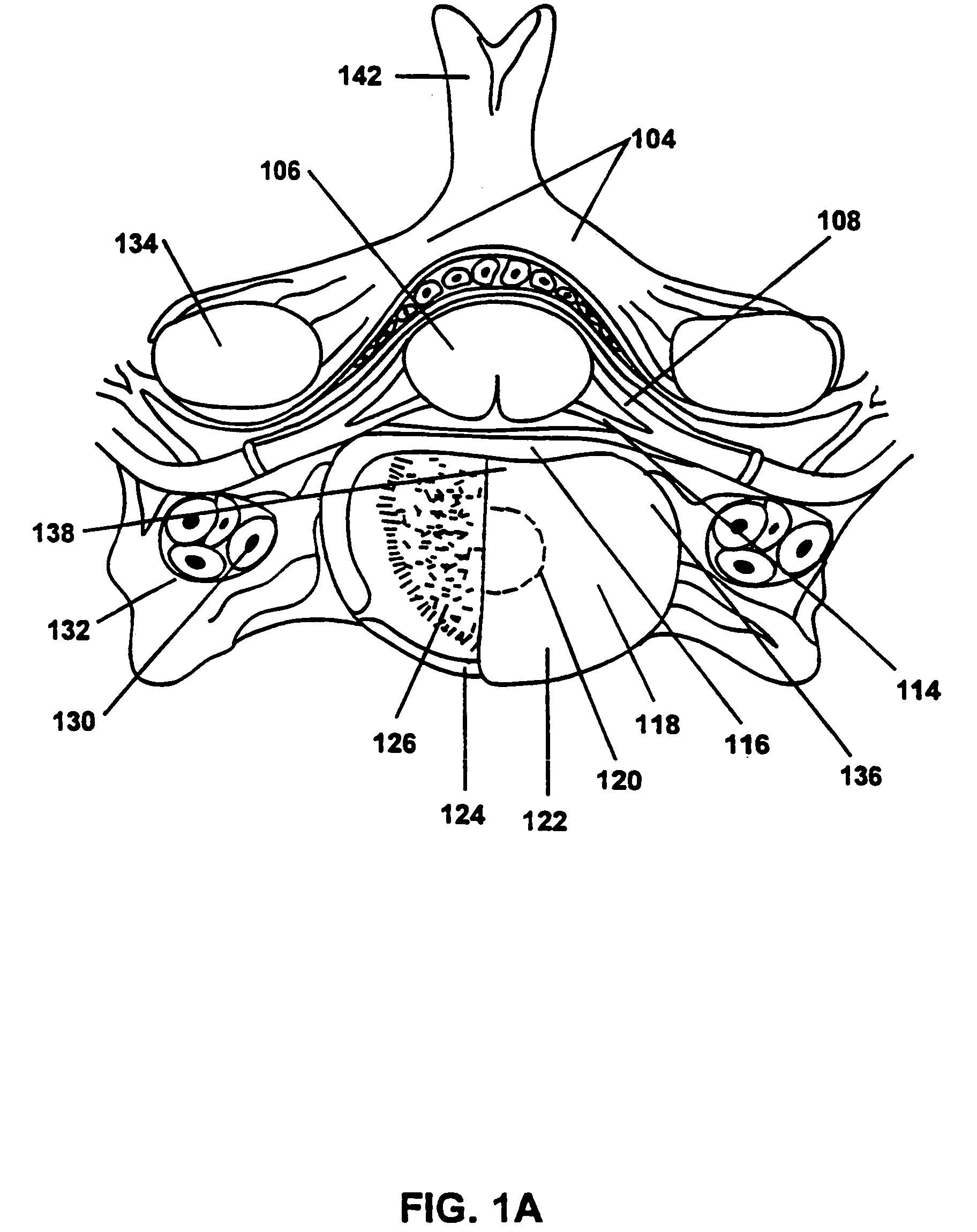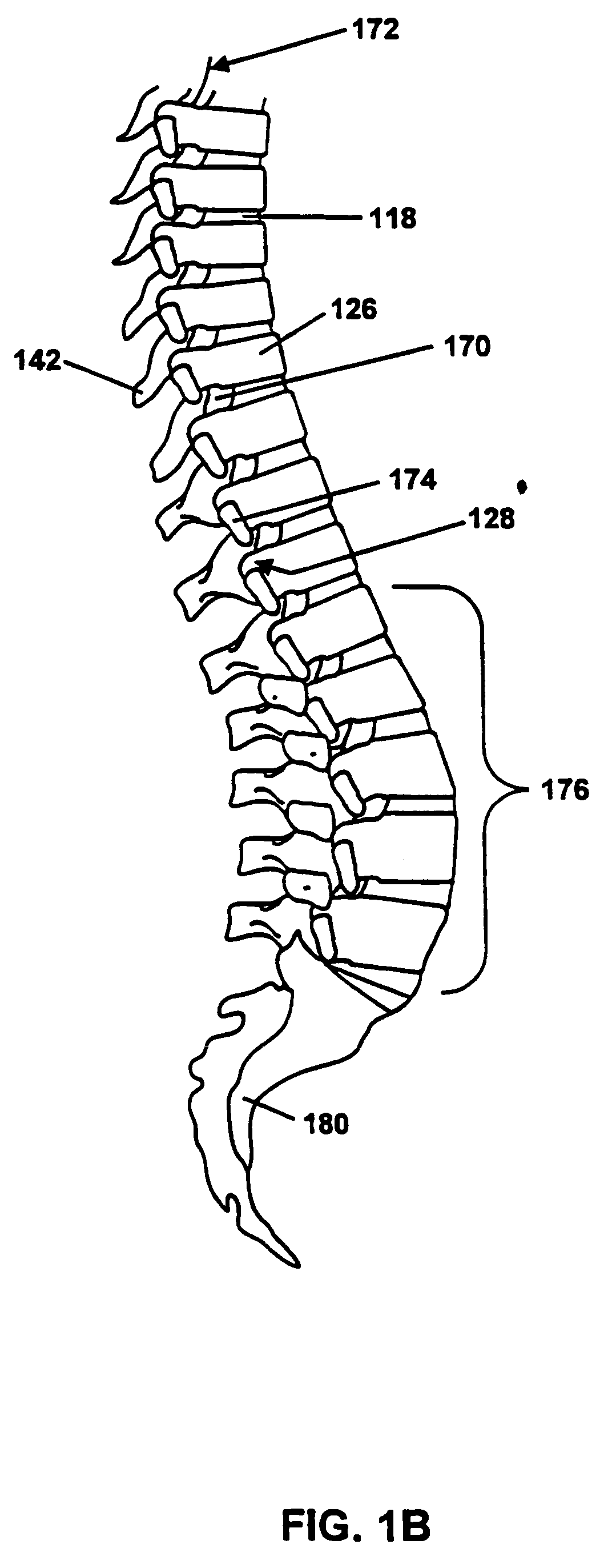Catheter for delivery of energy to a surgical site
a catheter and surgical technology, applied in the field of percutaneous techniques, can solve the problems of irritating surrounding structures, causing pain and discomfort, and creating fissures, and achieve the effect of reducing the water content of the nucleus pulposus and removing the redundancy of the disc roll
- Summary
- Abstract
- Description
- Claims
- Application Information
AI Technical Summary
Benefits of technology
Problems solved by technology
Method used
Image
Examples
Embodiment Construction
[0059]The present invention provides a method and apparatus for treating intervertebral disc disorders by the application of controlled heating to a localized region of an intervertebral disc. Such disorders include but are not limited to (i) degenerative discs which have tears or fissures in the annulus fibrosis, particularly fissures of the annulus fibrosis, which may or may not be accompanied with contained or escaped extrusions, (ii) contained disc herniations with focal protrusions, and (iii) bulging discs.
[0060]Degenerative discs with tears or fissures are treated non-destructively without the removal of disc tissue other than limited ablation to the nucleus pulposus which changes some of the water content of the nucleus pulposus. Nothing is added to supplement the mechanics of the disc. Electromagnetic energy is delivered to a selected section of the disc in an amount which does not create a destructive lesion to the disc, other than at most a change in the water content of t...
PUM
 Login to View More
Login to View More Abstract
Description
Claims
Application Information
 Login to View More
Login to View More - R&D
- Intellectual Property
- Life Sciences
- Materials
- Tech Scout
- Unparalleled Data Quality
- Higher Quality Content
- 60% Fewer Hallucinations
Browse by: Latest US Patents, China's latest patents, Technical Efficacy Thesaurus, Application Domain, Technology Topic, Popular Technical Reports.
© 2025 PatSnap. All rights reserved.Legal|Privacy policy|Modern Slavery Act Transparency Statement|Sitemap|About US| Contact US: help@patsnap.com



